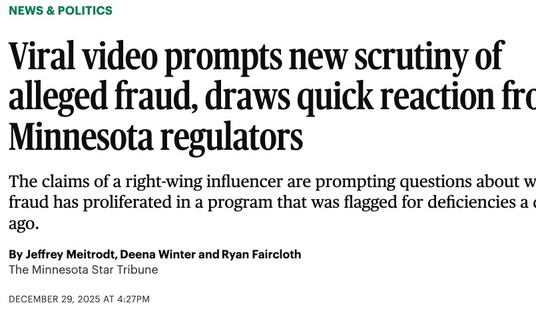The Washington Post wonders, “Are the politics of big government back?” Only under cover of darkness, in which the paper’s slogan assures us democracy dies. Using the COVID-19 relief/stimulus emergency package as a dodge, the Biden administration launched a stealth welfare program that it hopes Congress can’t afford not to extend, once people get used to more “free stuff.”
The sudden, unexpected creation of an approximately $120 billion social program has thrown a twist into the political landscape. Some Democrats now fear being labeled big-government spenders in the upcoming midterms. Some conservatives, on the other hand, are embracing the idea as a family-friendly measure.
With the initiative expiring in a year, all but ensuring it will be a major issue in the midterms, the child poverty measure raises a central question: Are the politics of big government back?
The program’s impact probably will be profound. It expands the federal child-rearing subsidy by 50 percent — and parents of toddlers will get even more. A family with two young children and no income will now get $600 a month. The parents of 90 percent of the country’s children will benefit, and 27 million children will be lifted from poverty, according to analysts.
Crucially, the new money takes the form of cash payments, not tax cuts, so even people who don’t make enough to pay taxes will get aid.
That approach aligns the United States far more closely with European-style wealth redistribution, according to both supporters and detractors. “I liken it to the New Deal,” DeLauro said in an interview. “This changes the country.”
I guess darkness serves its purposes, as long as those purposes align with the Post’s. Or the Democrats. But I repeat myself …
The difference between this and the New Deal, among other differences, is that the New Deal was the highlight of FDR’s agenda — indeed, of his 1932 campaign. Biden didn’t make this payout a secret, but he didn’t exactly proclaim it from the rooftops either. Neither did other Democrats, or for that matter Republicans, who were busier with culture-war issues rather than developing effective messaging against the relief bill. They wanted this to go through Congress as sotto voce as possible, keeping it from becoming a lightning rod for opposition.
Why? Because they’re playing the long game on changing the country:
Beyond that, Democrats hope American families will get used to receiving their checks, and they cite the Washington axiom that it’s hard to take something away from voters after they’ve started receiving it.
This might not even be the biggest problem when it comes to getting Americans hooked on “free stuff,” ie, money borrowed from China and our great-grandchildren. The three tranches of COVID-19 stimulus payments might end up being worse in that regard and reignite the progressive idea of guaranteed income payments, either instead of or on top of these subsidies. The Biden administration announced that the second round of this third tranche will go out this week, but how long will it be before these tranches become an unlimited spigot of “free” cash?
Nor is the Biden administration limited to these vehicles for “free stuff.” Republicans and conservatives — unfortunately not a redundancy these days — had better take a really good look at the three trillion dollar spending package coming down the pike next:
President Biden’s economic advisers are preparing to recommend spending as much as $3 trillion on a sweeping set of efforts aimed at boosting the economy, reducing carbon emissions and narrowing economic inequality, beginning with a giant infrastructure plan that may be financed in part through tax increases on corporations and the rich.
After months of internal debate, Mr. Biden’s advisers are expected to present a proposal to the president this week that recommends carving his economic agenda into separate legislative pieces, rather than trying to push a mammoth package through Congress, according to according to people familiar with the plans and to documents obtained by The New York Times.
The total new spending in the plans would likely be $3 trillion, a person familiar with them said. That figure does not include the cost of extending new temporary tax cuts meant to fight poverty, which could reach hundreds of billions of dollars, according to estimates prepared by administration officials. Officials have not yet determined the exact breakdown in cost between the two packages.
Mr. Biden supports all of the individual spending and tax cut proposals under consideration, but it is unclear whether he will back splitting his agenda into pieces, or what legislative strategy he and Democratic leaders will pursue to maximize the chances of pushing the new programs through Congress given their narrow majorities in both chambers.
Let’s hope we have more important items to discuss this next time than Mr & Mrs Potato Head. If we don’t stand up to these attempts to get Americans addicted to a stream of imaginary money, we will find that the country has changed, and no amount of potato heads will bring it back.








Join the conversation as a VIP Member